International Law and Immigration
ILS News – April 2025
Message from the Chair
Message from the Chair

Immigration as a policy debate has been ongoing since the founding of the United States. Whether or not citizenship is desirable in a country is often based on the ability to travel visa-free to other countries, economic opportunities, quality of life, political stability, ease of naturalization and whether there is a quick path to citizenship through investment programs.
Immigration is also a prominent policy issue in California including debates over economic, security and humanitarian concerns. California has two gateway cities, San Francisco and Los Angeles which are naturally more attuned to the policy debate. These cities typically are the routes in which immigrants arrive to the United States. In addition, these communities have been home to economic opportunity that offered residents good jobs and a “gateway” to the American Dream including jobs with higher-than-average incomes and real estate prices that outperform the average US home prices.
Consequently, understanding immigration basics provides value for all attorneys in California as it is likely that at some point in your practice you will encounter international and immigration issues. With that in mind, ILS is offering a series of webinars over the next several months including the next one on April 17, 2025, at 5 PM, Pacific Time titled EB-5 Investment Visa and Trump Gold Card Discussion covering the (1) impacts on pending EB-5 petitions and Regional Centers, (2) fraud enforcement and regulatory actions, (3) legislative viability of the Gold Card Program, (4) impact on ownership structures, securities issuances and private placements and, (5) potential investor responses and ethical considerations.
Another hot topic is tariffs. Our article this month, Supply Chain Considerations in the Second Trump Administration, by Jameson Rice who leads Holland & Knight’s Supply Chain Team, discusses a new era of trade policy in which tariffs are causing everyone to revisit, analyze and adjust supply chains. The article provides a great summary of events and shows how dramatically trade policy is shifting.
Finally, a quick reminder that registration is open for the Milan, Italy conference in October. All are welcome.
Theresa Leets
Chair, International Law and Immigration Section
California Lawyers Association
Past Events
California International Arbitration Week (CIAW)
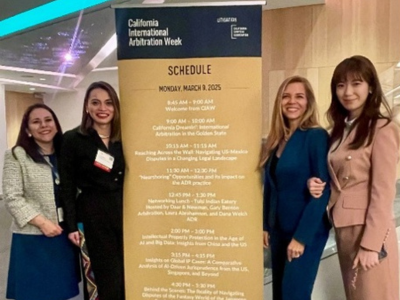
Ana Sambold, Yihan Feng from BIAC (China)
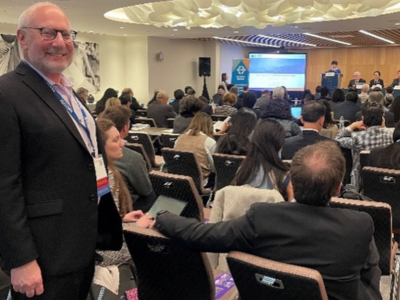

Dan Perera (Singapore), Jason File (ICC), Sherman Kahn (NYC)
Upcoming Events
Eb-5 Investment Visa & Trump Gold Card
April 17, 2025
Implications of the Trump Gold Card and its potential impact on the EB-5 program to include:
- Impact on Pending EB-5 Petitions & Regional Centers – How will existing investors and Regional Centers be affected?
- Fraud Enforcement & Regulatory Actions – Given the administration’s rhetoric about extensive fraud in the EB-5 program, how will enforcement measures evolve?
- Legislative Viability of the Gold Card Program – Will this initiative withstand legal and legislative scrutiny?
- Corporate & Securities Law Implications – How will these changes affect ownership structures, securities issuances, and private placements?
- Investor Response & Ethical Considerations – Will there be a rush to invest in EB-5 before the program potentially becomes less accessible? What are the ethical implications of such urgency?
Speakers:
- Radhika Blaji, RB Immigration Law
- Divij Kishore, Flagship Law LLC
- William Gay, Wilson Elser Moskowitz Edelman & Dicker LLP



Events
California Lawyers Foundation Classic Fairways to Justice Golf Tournament
April 17, 2025

The California Lawyers Foundation is hosting a first-of-its-kind mentorship and charity golf tournament at the iconic Pelican Hill Golf Club in Newport Coast, California, on April 17, 2025.
What to Expect:
- A thrilling 18-hole shotgun scramble golf tournament
- Delicious lunch and on-course refreshments
- Fun contests: Hole-in-One, Longest Drive, Closest to the Pin, and Easy Birdie
- Celebrate at the 19th Hole After-Party and honor the 2025 CLF Classic Leaders & Legends Award recipient
Warren M Christopher International Lawyer of the Year Award Nominations
Nomination Deadline: May 2, 2025
The Warren M. Christopher Award is presented annually by the International Law and Immigration Section of the California Lawyers Association (“ILS”) for distinguished service in the promotion of the rule of law internationally or for significant achievement in the practice of international law.
Nominees shall be licensed attorneys with significant ties to the State of California but need not be licensed by the State Bar of California (e.g. in-house counsel, law professors and judges). Self-nominations are not accepted. Nominees do not need to be a member of the ILS. Nominations of current members and officers of the ILS Executive Committee and its Standing Committees may not be considered if nominated. Nominations shall be kept confidential by the Award Committee and the ILS. Campaigning for the selection of the awardee is discouraged and will not be considered.
Nominations are to be directed to the ILS Award Committee, which shall evaluate the nominations and recommend three awardees to the ILS. Factors to be considered in evaluating nominations include, but are not limited to, promoting and achieving diversity.
SAVE THE DATE: NASA Jet Propulsion Laboratory (JPL) Tour
May 19, 2025
May 19, 2025
9:30 AM – 12 PM
La Canada, CA
The Los Angeles County Bar Association (LACBA) International Law Section and the California Lawyer Association’s International Law and Immigration Section are co-sponsoring a half-day tour at NASA.
All tours commonly include a multimedia presentation on JPL entitled “Journey to the Planets and Beyond,” which provides an overview of the Laboratory’s activities and accomplishments. Guests may also visit the von Karman Visitor Center, the Space Flight Operations Facility, and the Spacecraft Assembly Facility.

Conferences
CLA Annual Meeting – Call for Program Proposals
Proposal Deadline: May 2, 2025
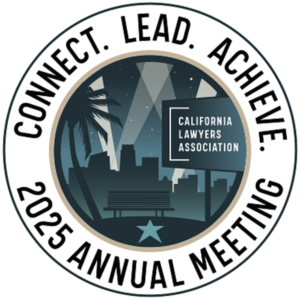
The CLA Annual Meeting returns to Southern California and will be held at the Sheraton Universal Hotel in Universal City on September 11-13, 2025. California lawyers and the legal community will not just gather to collaborate across all practice areas, but it is their time to meet and discover the possibilities of how to transform the daily and worldly issues that the California legal community faces today.
The CLA welcomes and encourages you to present your expertise to provide members and attendees with access to excellent education.
Please submit your proposal here! Our Programs Committee’s proposal review process will commence after May 2, 2025. Thank you for your interest and support in providing an education proposal for the 2025 CLA Annual Meeting.
International Conferences
You’re Invited to the CLA/Milan Bar International Conference!
October 15 – 18 in Milan, Italy
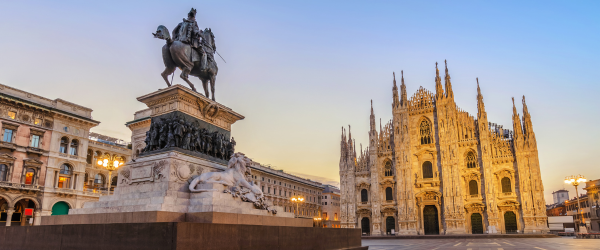
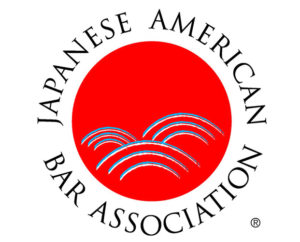
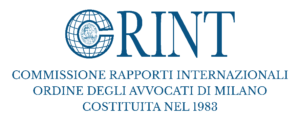

Join us for an unforgettable experience in Milan! The International Conference will feature:
- Earn MCLE credits while participating in a series of thought-proviking academic sessions and networking opportunities.
- Indulge in exquisite Italian cuisine and world-renowned wines.
- Explore Milan’s iconic museums, art galleries, and historic landmarks, including Lake Como.
Article
Supply Chain Considerations in the Second Trump Administration
By Jameson Rice, Partner @ Holland & Knight LLP
Read any article about supply chains during these early days of the second Trump Administration and it is bound to focus on tariffs. And for good reason. The U.S. is transitioning into a new era of trade policy in which tariffs are animating a critical need to analyze and adjust supply chains. But the supply chain itself reaches well beyond tariffs. Supply chains involve obtaining materials, manufacturing products, buying, selling, moving and storing those products around the world and financing it all. Tariffs represent just one of many factors to evaluate when formulating a supply chain strategy. Other considerations include labor and production costs and quality, government grants and tax incentives, information security concerns, wars and conflicts, construction speed and cost, and the cost, speed, and reliability of transportation, just to name a few. Navigating the legal issues of a supply chain involves multidisciplinary legal and policy considerations.
Still, analyzing supply chains during the Trump Administration begins with tariffs. When it comes to actions affecting supply chains, President Trump’s second term began not on inauguration day, but almost two months earlier. On Nov. 25, 2024, then President-Elect Trump posted two messages on Truth Social indicating that until drugs and illegal immigrants stop entering the U.S., on the first day of his administration, he would place 25 percent tariffs on Mexico and Canada and an additional 10 percent tariff on China.
This proposal caused quite a stir. These three countries are the U.S.’s three largest trade partners. Canada and Mexico are parties to a free trade agreement negotiated during the previous Trump Administration. We didn’t know at the time if he was serious or if this was a negotiating tactic. So far, the answer appears to be both.
Fast forward to the recent “Liberation Day” tariffs, and the November announcement seems quaint. On April 2, 2025, President Trump issued an executive order imposing a reciprocal tariff of 10 percent on all imports into the U.S. (other than United States-Mexico-Canada Agreement-compliant exports from Canada and Mexico), and tariffs on 57 countries ranging from 10 to 50 percent. There is a lot of nuance, but these tariffs are unlike anything we’ve seen. Seven days later, on April 9, he maintained the 10% across-the-board reciprocal tariff but paused these additional tariffs for 90 days. Separately, China responded to its tariff increases and raised tariffs on U.S. goods to 84%, to which President Trump responded by raising the total to 145% on Chinese goods, which was not paused like the tariffs on most of the rest of the world.
Between these two major events has been an almost constant barrage of actions taken by the administration that affect supply chains. A bullet point list cataloguing some of the most significant actions is at the end of this article. It is too long to place in the middle without breaking the flow and perhaps causing your eyes to glaze over; although, that is partly the point. It is challenging to keep up with the frequency and scope of proposed changes, actual changes, and reversals or renegotiations in the tariff landscape (In fact, it has changed in several drastic ways just since I started writing this article, much to the chagrin of those people assisting with editing and formatting this article.) The details are critical. But for companies trying to devise a supply chain strategy, a broader view is also required.
When trade was more stable, the predominant focus of supply chains was efficiency. Lean inventory, produced inexpensively, that arrived just in time. The COVID-19 pandemic broke that model for many. Any lingering notion that we might revert to pre-COVID traditions appears impractical for many industries, given the inherent risks associated with that model. Efficiency is insufficient. Supply chains must also be resilient and nimble.
Social media posts can be drafted quickly. Even executive orders come one after another. But supply chains take time to construct. To be resilient and nimble requires optionality. That is, precleared paths, likely with some volume of production all the time, with the ability to ramp up or reduce production when needed. Diversifying a supply chain is like insurance. It may add some expense, but it is a hedge against risk and helps avoid big swings in cost and the downside of a lack of product availability.
There are multiple factors to consider in devising a supply chain strategy that implicate different legal disciplines. For example, moving production from China to Southeast Asia has been a common counter to Chinese tariffs, but if the inputs are still coming from China, which is often the case, and the work performed at the new facility is not sufficient to satisfy rule of origin requirements, moving the finishing of production will not reduce tariff rates.
Even where rule of origin requirements can be satisfied, at lot depends on the trade war with China. When the higher “Liberation Day” tariffs were announced and briefly enacted, a 46% tariff was imposed on Vietnam, 49% on Cambodia, 36% on Thailand. These are less than the 54% China was set to receive, but the comparative advantage was greatly reduced. As of April 10, China’s tariff is 145% and these high rates on other countries were put on hold, making the comparative advantage greater than ever. But we don’t know if this will hold. Earlier in the Trump Administration, Mexico and Canada’s tariff increases were postponed by 30 days before being implemented. A substantial increase may still be on the horizon for Southeast Asia.
Mexico has seen tremendous outside investment, especially since the trade war was started with China, with companies attempting to capitalize on labor rates that are generally lower than those in China, along with short transit times to the U.S. and historically beneficial trade terms. But the new administration’s approach to Mexico requires careful analysis both with respect to the immigration border policies and trade specific actions. Additionally, when considering suppliers in Mexico, Chinese companies have been major investors in Mexico. Even when a Chinese company is able to satisfy rule of origin requirements in Mexico, U.S. concerns about intellectual property security and geopolitical strategy with China more generally raise independent issues.
Like southeast Asia, Mexico is also reliant on a comparative advantage with China. As of April 10, it has gained ground against China, but lost ground against Southeast Asia. Trade agreements between Mexico and other countries impact the analysis as well, all of which will be shaped by trade wars between the U.S. and China.
Under the Chips and Science Act and the Inflation Reduction Act, the Biden Administration incentivized U.S. production with billions of dollars in grants and tax incentives. These laws generated a lot of “carrots,” along with a continuation of some of the tariff “sticks” from the first Trump Administration. The second Trump Administration appears to be seeking this outcome principally with “sticks.” The chief incentive may come from an upcoming tax bill that may aim for a “rising-tide-lifts-all-boats” business friendly tax strategy, but the early indication is that the emphasis will not be tailored to specific re-shoring outcomes the way that grants and tax incentives were under President Biden. President Trump said in his March 4, 2025, address to Congress:
Taiwan Semiconductor . . . announced a $165 billion investment to build the most powerful chips on Earth right here in the USA. And we’re not giving them any money. Your CHIPS Act is a horrible, horrible thing. We give hundreds of billions of dollars and it doesn’t mean a thing. They take our money and they don’t spend it. We’re giving them no money. All that was important to them was they didn’t want to pay the tariffs, so they came in their building and many other companies are coming. We don’t have to give them money. We just want to protect our businesses and our people. And they will come because they won’t have to pay tariffs if they build in America.
There are still “carrots,” but they may require more digging to uncover. These carrots come with strings attached, which need to be considered. Even without the same grant and tax incentive structure, there are still opportunities to advocate for changes to law and policy with the executive and legislative branches. The mechanics of government relations may simply look different in this administration compared to the last one, and a different approach may be required.
There is also the blocking and tackling of supply chain, that is, the actual producing, buying, moving storing and financing of goods. This means procurement contracts, transportation contracts and warehousing contracts, all with existing suppliers and potential new providers, all of which need to be considered for a future that is less predictable. Larger investments in building facilities means considering financing as well as construction, real estate and land use. These are all issues with legal implications.
The first few months of President Trump’s second term has brought volatility and uncertainty, which will fundamentally impact supply chains. New trade policy will create winners and losers. Although the future is uncertain, this is not the time to simply “wait and see.” A potentially volatile future calls for a multi-faceted strategic approach.
*****
List of President Trump’s Actions Prior to “Liberation Day” Impacting Supply Chains
- On January 20, 2025, President Trump issued a presidential memorandum titled “America First Trade Policy.”
- On January 26, he announced on Truth Social five immediate, urgent and decisive measures against Columbia, including emergency tariffs of 25 percent that would escalate to 50 percent in one week, which were called off the next day.
- On February 2, the president announced 25 percent tariffs on imports from Canada and Mexico. Two days later, these tariffs were postponed for 30 days. Also on February 2, he announced a 10 percent tariff on Chinese imports and suspended the de minimis exemption.
- China responded with 10 percent and 15 percent retaliatory tariffs on select U.S. natural resources and machinery and tightened trade measures by expanding export controls on critical minerals, adding two U.S. companies to its Unreliable Entity List and launching an antitrust investigation into Google.
- The suspension of the de minimis exemption caused the U.S. Postal Service to temporarily stop accepting parcels from China and Hong Kong before allowing them again.
- On February 8, President Trump amended his previous order to continue to allow the de minimis exception until the U.S. Department of Commerce can set up a system to process these shipments.
- On February 11, a 25 percent tariff on imported steel and aluminum was imposed.
- On February 14, he ordered a study of reciprocal tariffs, which, if implemented, would increase tariffs to varying degrees on countries around the world.
- On February 25, the U.S. targeted Chinese ships and operators with millions of dollars in new port charges.
- On February 27, President Trump announced plans for another 10 percent tariff on products from China.
- On March 1, steel and aluminum import tariffs were announced.
- On March 4, a 25 percent tariff on imports from Canada and Mexico went into effect. That same day, China announced 10-15% retaliatory tariffs on U.S. agricultural products, effective March 10. These include 15% tariffs on chicken, wheat, corn, and cotton, and 10% tariffs on sorghum, soybeans, pork, beef, seafood, fruit, vegetables, and dairy products. China also suspended export permits for certain U.S. soybean producers and imports of U.S. logs, citing quarantine non-compliance and pest detection. Additionally, China added 10 U.S. companies to its Unreliable Entities List and 15 U.S. companies to its Control List, prohibiting export activities involving China and new investments in China.
- On March 6, the White House granted a one-month tariff exemption for automakers and USMCA commodities.
- On March 12, U.S. tariffs of 25 percent on imports of steel, aluminum, and derivative products went into effect.
- On March 19, the U.S. announced a 25 percent import tariff effective April 2 for any country found importing oil from Venezuela. That same day, Canada imposed 25 percent tariffs on personal goods from the United States.
- Interspersed have been statements about taking back the Panama Canal (the Hong Kong-owned company that owns and operates the ports on either side of the Panama Canal has since been working on a sale to a US company) and buying Greenland and unlocking its mineral resources.
Jameson Rice is a transportation lawyer who leads Holland & Knight’s Supply Chain Team. Called a “commercially minded business partner” by a client quoted in Chambers USA, he has experience with commercial transactions across multiple industries, but practices primarily in the areas of road and rail transportation, warehousing and logistics, as well as ocean transportation and noncontiguous domestic trade.

